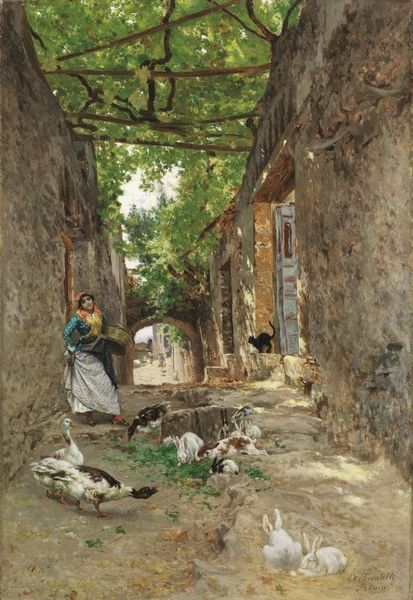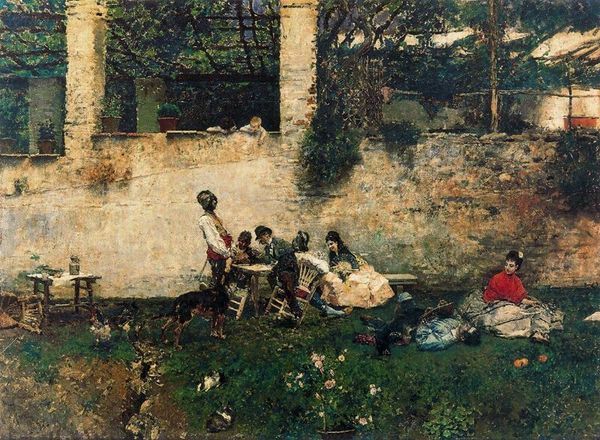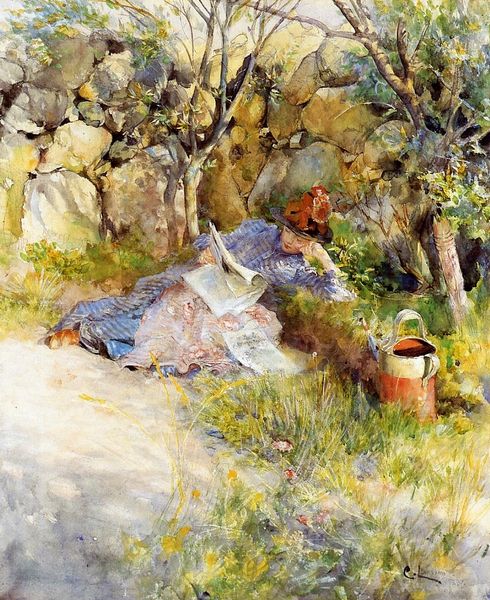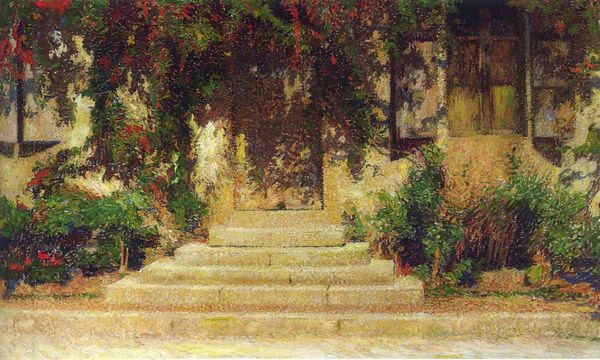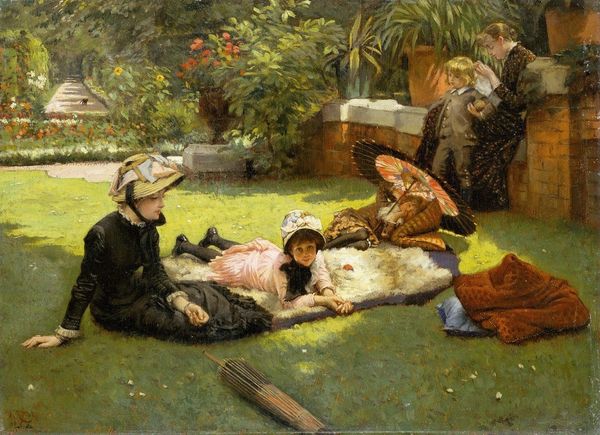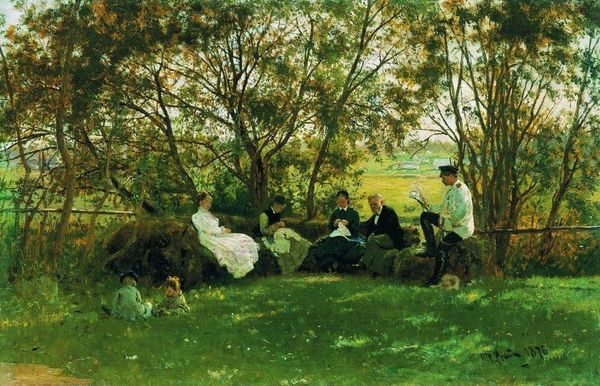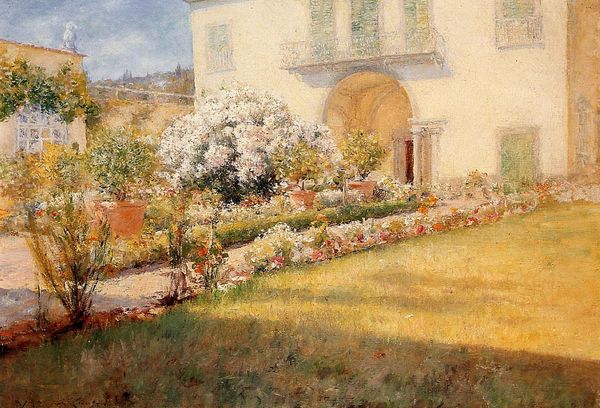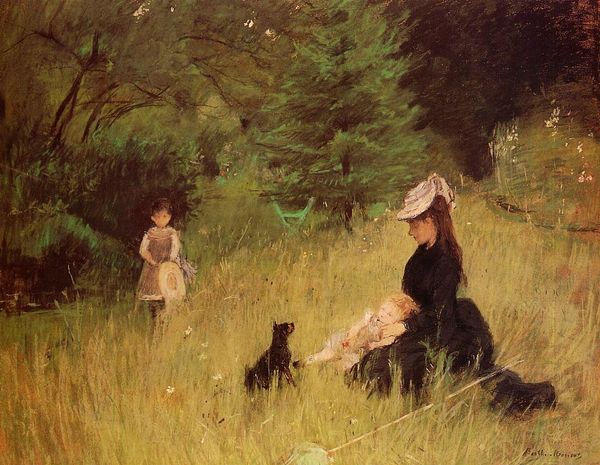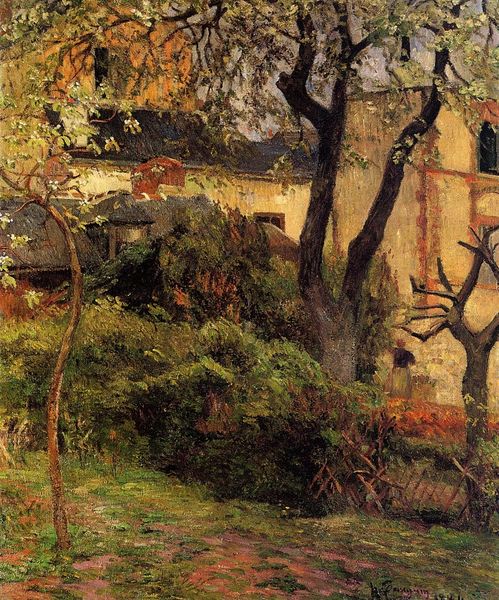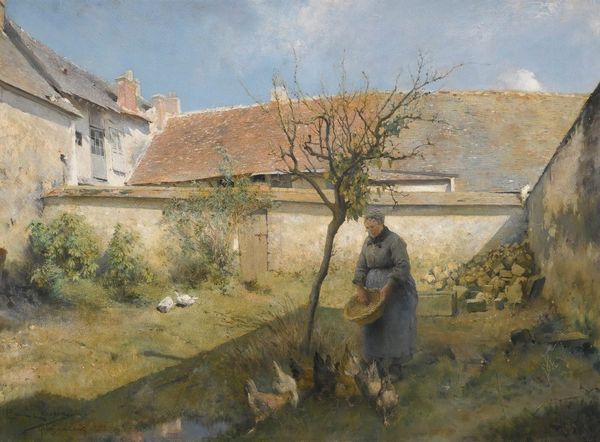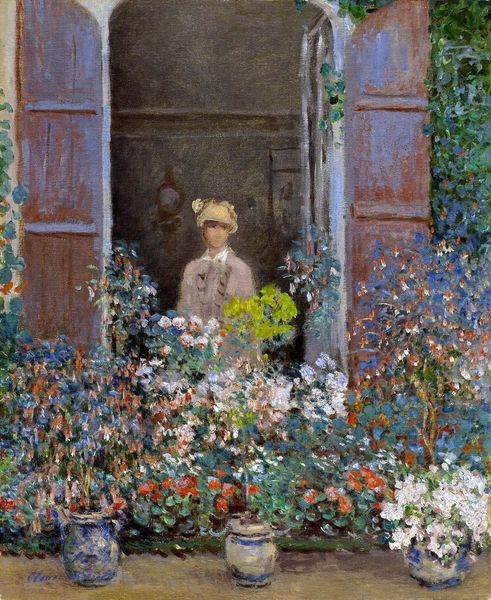
painting, plein-air
#
portrait
#
animal
#
painting
#
impressionism
#
plein-air
#
dog
#
landscape
#
forest
#
painting painterly
#
genre-painting
Dimensions: 28.89 x 51.12 cm
Copyright: Public domain
Editor: Here we have Giovanni Boldini's "Spring (Young couple in Empire dress on the meadow)" painted in 1873. It looks like an outdoor painting with a couple lounging with their dog. It feels very casual and charming, almost like a snapshot. What can you tell me about this piece? Curator: Well, it's interesting to consider how Boldini uses the visual language of Impressionism – the quick brushstrokes, the focus on light and atmosphere – to portray a scene of leisure enjoyed by the bourgeoisie. Look at the positioning of the couple. How does their proximity to the building and the way the setting is portrayed frame the painting’s reception by its contemporary audience? Editor: I hadn’t really considered the background architecture as having significance beyond just the setting. It is an imposing and present part of the image. Curator: Exactly! This isn't just a painting of a pretty scene. Consider the social context: Boldini is painting for a specific audience, and portraying specific socio-economic ideas. The dog, the clothing, even their leisure, suggests affluence. How does this scene compare with representations of working-class individuals or rural peasants during the same period? Editor: Now I see! I focused too much on it as simply capturing a moment, and not enough on what it represents about society. It tells you who this art was for, not just what the artist could do. Curator: Precisely. This idyllic image performs a specific social function. By focusing on the pleasures of the upper class, Boldini contributes to the construction and validation of their social position. The way artists engage with class dynamics in their work and its subsequent reception can reveal significant truths about social values during the time period. What does this perspective add to your initial reaction? Editor: It really shifts my view. It makes me consider who is usually left *out* of the picture in artworks like these. Thanks, I appreciate the insight.
Comments
No comments
Be the first to comment and join the conversation on the ultimate creative platform.
